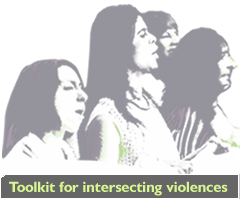a different gender agenda
Posted: October 25, 2013 Filed under: Uncategorized | Tags: foundation for sustainable development, gender inequality, law 779, wales nicaragua Leave a commentNicaragua, obviously, is a serial offender when it comes to women’s rights. Or at least that’s the impression you get from reading the mainstream media. Nicaragua is not an exception. Patriarchy is the norm, as in most (if not all) countries. So it is easy to present what is happening there as further evidence of the growing oppression of women and a widening gap of gender inequality.
One of the most important debates that happened over the summer was the amendment of Law 779, to protect Women against Violence. The Law has been widely welcomed, both in Nicaragua and abroad. The amendment has not. It allows for mediation between the woman and her aggressor, something opposed by both women’s organisations and leading female Sandinistas. It was, however, passed in late September. Nicanet, our sister organisation in the United States, reported the seeming discomfort of the head of the Supreme Court when it endorsed the announcement.
Supreme Court President Alba Luz Ramos, seeming to indicate her own divided sentiments on the issue, suggested that “Women’s organizations should accompany women to prevent cases from going to mediation.” She added, “Within the amendment, it is clearly written that the judge must tell the woman that mediation is voluntary and ask her if she is being pressured by someone to accept mediation.”
There is a real concern that the amendment will lead to women not only having to face their attackers in mediation, but could lead to them going back into a dangerous situation. For many years women’s organisations have been raising concerns about femicide in Nicaragua, part of a regional problem (see here for an excellent report from CAWN, another sister organisation). There was also condemnation in the Guardian the following day, written by Christian Aid’s representative in Nicaragua (see here). Emily Schecter writes:
Nicaragua’s patriarchal society has forced women to be economically reliant on their husbands or boyfriends, and leave them charged with the responsibility of keeping the family unit together. This pressure often leads to women agreeing to mediation, even when their life could be at risk.
This could lead you to conclude that Nicaragua is a hell hole for women. But something else is going on in the country. The CAWN report gives figures for femicide for Central American countries from 2001 to 2009 (nine years).
|
Country |
Number of deaths |
% compared to Nicaragua’s population |
% compared to Nicaragua’s femicide rate |
|
Nicaragua |
587 |
|
|
|
Honduras |
1,308 |
130% |
223% |
|
El Salvador |
3,034 |
107% |
562% |
|
Guatemala |
4,674 |
244% |
796% |
Whilst the 80 odd yearly femicides in Nicaragua are reason for outrage, they are less than half their nearest neighbour in Honduras (and this gap has widened in recent years after the coup in Honduras, and the targetting of feminist groups). No wonder that women are fleeing Honduras, Guatemala and El Salvador for the relative safety of Nicaragua.
Although the mediation clause is a retrograde step, passed to appease some of the churches in Nicaragua, the law itself is a major step forward. Again it needs to be seen in context. The alternative is summed up nicely by the Archdiocese of Managua’s Family, Life and Childhood Pastoral Commision. In September they said that a crisis was affecting the family in Nicaragua. Reported in Envio, the crisis began with the ‘aggressive’ promotion of birth control; the ‘plague of unilateral divorce; and Law 779 against violence against women, which is ‘marked by the ideology of gender’.
Given Nicaragua’s bad press regarding women’s rights, it might come as a surprise to learn that yesterday Nicaragua was placed 10th in a list of global gender equality, for the second year running. Apart from the Philippines, it was the only developing country to make the ten best. The UK lagged behind in 18th place. The Guardian covered the story here.
With the scarcity of resources in this poor country, and this astonishing result, were we treated to an in-depth analysis of why Nicaragua attained 10th place? On the contrary. The Guardian let the Foundation for Sustainable Development, an NGO which operates in Nicaragua, give their opinion why the country has placed so highly:
In a separate report, the Foundation for Sustainable Development said Nicaragua’s deeply ingrained gender inequality, which stems from its largely subsistence, agricultural economy where women carry water and other basic tasks, is counteracted by charities and NGOs that provide workshops to women that improve health, relationships, and education, as well as cultivating successful microenterprises.
Anyone who has taken an interest in Nicaragua over recent years will know that this is nonsense. Whilst many NGOs have carried out good work in Nicaragua since the time of the Revolution, the country has only made in-roads into poverty and gender inequality since the Sandinistas regained power. Many of the governmental programmes are directly aimed at women. Elsewhere we have detailed the progress of Zero Hunger and Zero Usury, to name but two, which work soley with women. The measures which have led to Nicaragua being on-track to achieving the Millennium Development Goals have again relied on government intervention.
Perhaps the Foundation for Sustainable Development have a different measure of what constitutes gender equality. With corporate partners like Bank of America, Barclays, Chevron, Coca Cola, Google, Merrill Lynch, Microsoft and Pfizer, who can doubt their commitment to human rights, gender equality and a just world. No wonder the Guardian thought they were the right organisation to assess Nicaragua’s progress.

